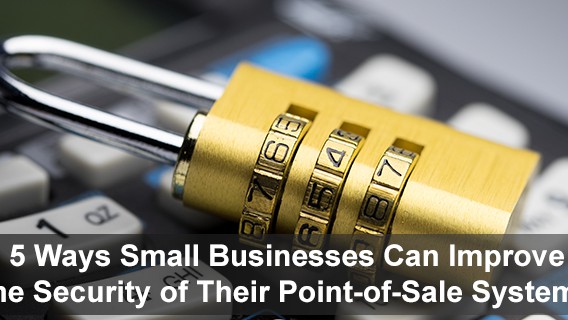2020 has proven to be a year of compromise. The COVID-19 outbreak has caused several industries to adapt their workflows to remote work in efforts to avoid shutdowns and compromising employee safety. This is the right course of action, naturally, but there’s something that can’t be compromised on even if the nature of your entire business or industry is shifting: proper cybersecurity. More specifically, remote cybersecurity.
Unfortunately, while many industries such as manufacturing have made amazing stretches in incorporating new technology such as embedded pcs tailored to their operations within the workplace, they haven’t had much exposure to remote work policies and precautions. And this is rather evident according to Gartner who explains that 91% of HR leaders have implemented remote working policies since the outbreak and still comment that the biggest challenge in doing so has been the lack of proper technology such as cyber security hardware and software.
So, with this sudden need to adapt to a remote workforce, how can businesses, manufacturers, and even start ups avoid being improperly equipped to handle remote cybersecurity? We’ve covered 3 of the best methods below as well as some tips on how those tailored pieces of hardware we mentioned earlier can be repurposed to enhance cybersecurity remote work practices.
1.) Update Your Remote Cybersecurity Password Practices
Article Guide
When one starts to become conscious of remote cybersecurity threats, the first thing they’ll often turn their attention to is the passwords used to gain entry to their most essential data storages and software. Fortunately there are a few best practices you can implement rather easily that’ll protect those passwords without making the process of logging into these important tools more difficult.
Password Vaults
When employees are required to log into several different accounts and programs in a given day, it becomes common practice to use the same password for many, if not all, of these accounts, especially when many of these programs demand complex passwords with special characters, making them harder to remember. It doesn’t take a remote cybersecurity pro to realize that this can be a pretty glaring hole in your defense efforts.
Password vault programs such as Keeper allow users to store several passwords that are different and optimized to be secure with those special characters we mentioned. The best part is that these programs only ask users to type in a single master password to gain access to this vault of complex login credentials. For those not interested in creating a slew of passwords themselves, these vaults can also auto-generate them and lock them away behind the one master password a user would be tasked with remembering.
This is all well and good, but it’s only a single layer of defense. Once that master password is guessed, a cybercriminal is just as capable of compromising your remote cybersecurity as before. Luckily, there are further defensive steps you can take.
Multi-Factor Authentication
Passwords, even complicated ones, that anyone could guess if they were given enough time shouldn’t be your only defense against cybercriminals. Proper remote cybersecurity requires authentications that can only be provided by those intended to gain access, not just anyone with a keyboard. That’s where multi-factor authentication can go a long way towards bolstering your security efforts.
Like the name implies, multi-factor authentication confirms a person’s identity by having them input a second form of identification. This second identifying factor can be delivered digitally in some cases, such as when users are asked by the program they’re logging into to enter a code that’s sent to their mobile device.
In other cases, the identifier can be a physical item such as an RFID badge or CAC card. Physical authenticators such as these can be much more secure if you want to avoid cybercriminals who can simply gain access to an account and change the phone number on record to one they have access to. Of course, physical identifiers such as these often require peripheral hardware that can read these badges and cards. If, however, you plan on providing employees with more access to business crucial information with extra protection, letting them take home a device from the office with these peripherals built into the hardware such as an all in one desktop or more portable industrial grade tablet for manufacturing teams is advised.
2.) Regulate Your BYOD Policies
Now that entire teams are beginning to work remotely, the odds that sensitive company work will be done on personal devices such as smartphones, tablets, and desktop computers is going to rise exponentially. This can be a huge risk to remote cybersecurity efforts if one of those personal devices is handed down, sold, or even improperly disposed of without that work and data being wiped clean.
Of course, in a perfect world, companies would simply give their entire team a device that they could use from home. One that could be monitored, wiped, locked, and restored remotely. Unfortunately, this can be prohibitively expensive for many businesses, especially those struggling to adapt to a shifting economy. Best practice dictates that you carefully go through who will be working from home and who will more regularly be accessing company sensitive data in order to prioritize who gets one of these devices that can be monitored.
For example, anyone accessing organizational internal networks or data you may find sensitive should be provided a device. Those on the ground level who are using predominantly email and maybe some software that doesn’t have access to classified data can, more than likely, get away with their own devices.
3.) Update Training to Reflect Remote Cybersecurity Risks
One of the best practices you could engage in, not just in regards to remote cybersecurity, but cybersecurity in general is to constantly update your training curriculum for security threats. With COVID-19 transforming the way cybercriminals conduct their attacks, it’s up to you to update your curriculum to reflect that.
Double down on training staff to avoid the cyberattack methods that are becoming more common due to current developments. For example, in response to the global pandemic, phishing scams have skyrocketed in popularity since they’ve been targeting users’ natural curiosity regarding the spread of the coronavirus.
Updating your cybersecurity training curriculum to address today’s security risks means focusing on these phishing scams. Let employees know the types of emails they could be avoiding and discourage them from clicking links from unverified sources or anyone outside of your team.
If you have the time and resources, running a phishing test can also allow you to test your employees’ vigilance and attention to detail when opening and responding to possibly malicious emails. These usually involve sending emails like the ones sent by cybercriminals to employees and tracking who clicks on what, giving you an idea of which cyberattack methods your team is less aware of and more susceptible to.
Remote Cybersecurity is Possible. It Just Takes Work.
Many businesses that previously thought remote working would never be possible are beginning to realize it’s more doable after being forced to adapt. The same can be said about remote cyber security. It’ll take some training, attention to detail, and perhaps some new hardware, but once these infrastructures are set in place, you may just find that your business is more productive and secured than you thought it could be working remotely. For more information on how you can empower your remote cybersecurity efforts, contact an expert from Cybernet today.
5 Ways Small Businesses Can Improve the Security of Their Point-of-Sale Systems
June 2, 2016
Many small businesses such as restaurants, bars, or even retailers, use Point-of-Sale (POS) systems to make the process of receiving payments from customers easier. Complete POS systems may include a computer along with…
0 Comments6 Minutes
4 Ways to Improve Inventory Management with an Industrial Tablet
July 19, 2018
Inventory management – checking the amount of product on hand, its location and its status in the shipping process – ranks as one of the most important aspects of any business. It allows you to minimize expensive…
0 Comments8 Minutes
You Can't
Learn from a Pop-up
But we can deliver knowledge to your inbox!
We dive deep in the industry looking for new trends, technology, news, and updates. We're happy to share them with you.
Knowledge, News, and Industry Updates Right in Your Inbox




